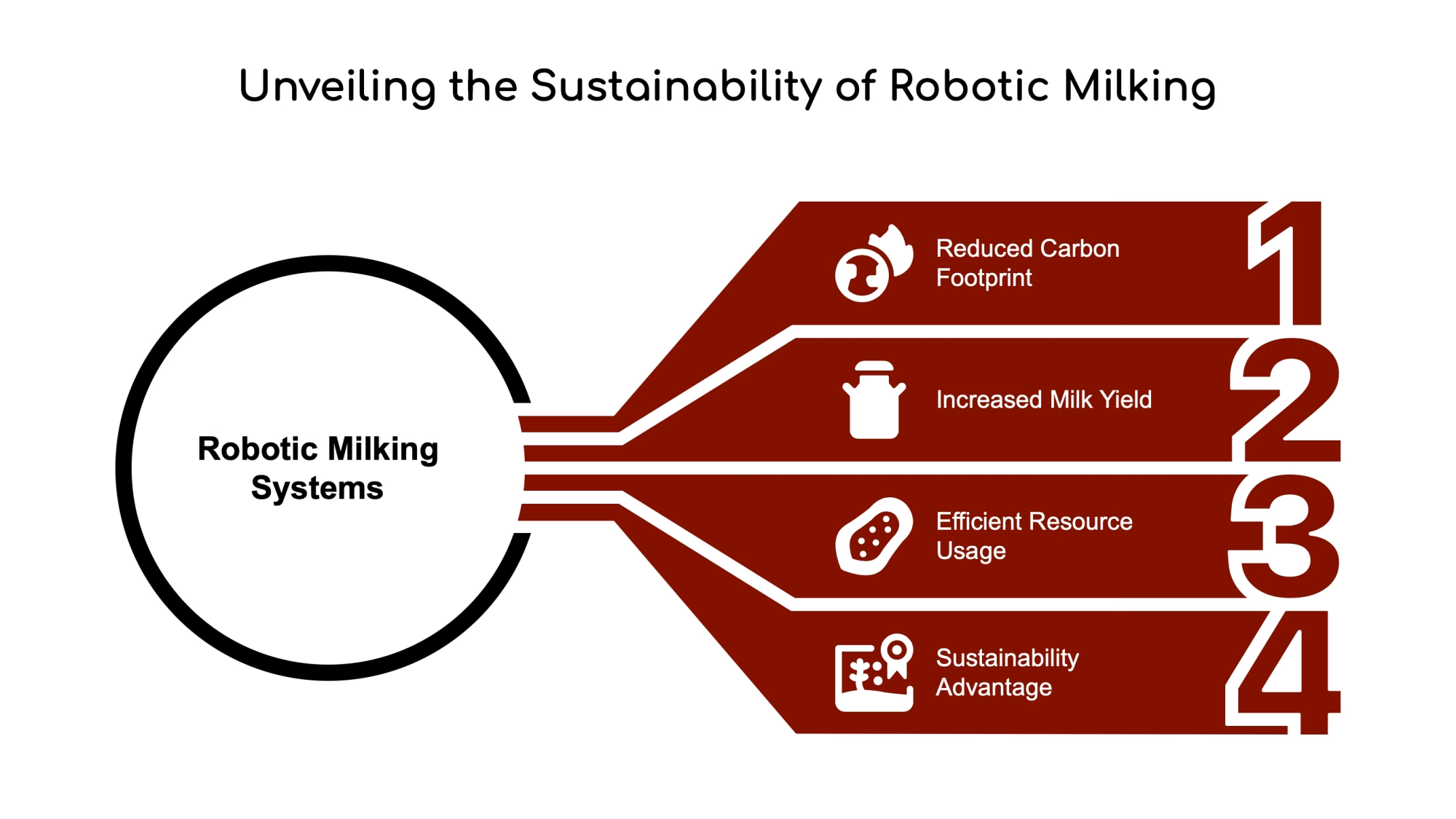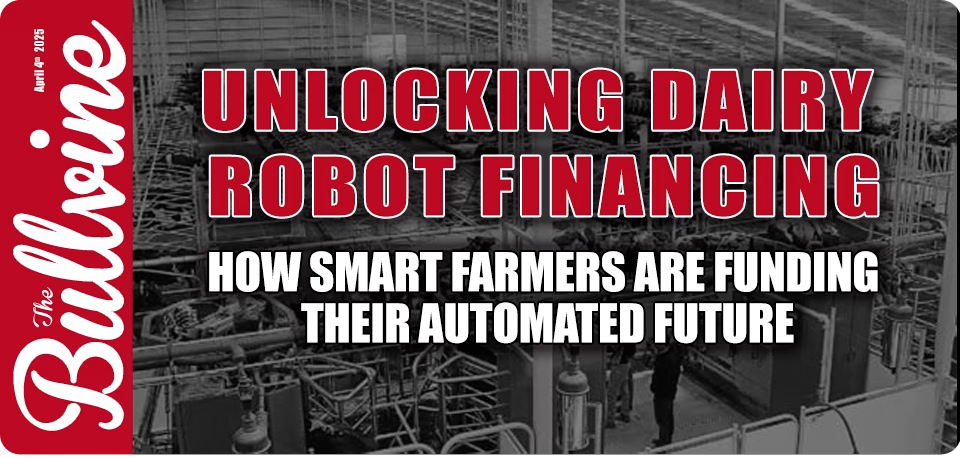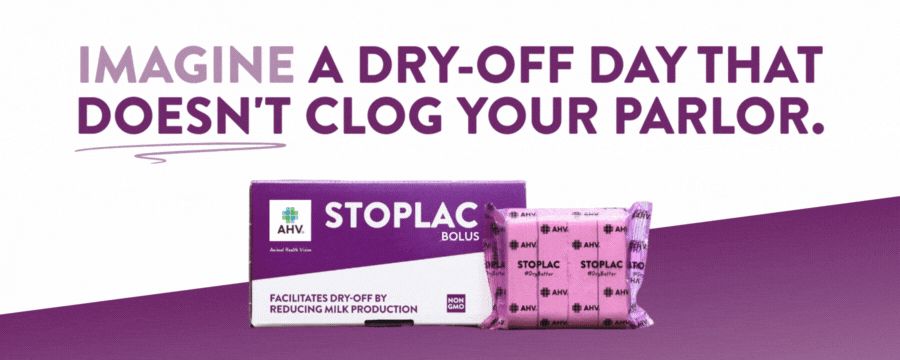Losing $500/day without dairy robots? Discover financing hacks boosting milk yields 9% & slashing labor 28%—before your herd falls behind.
Have you been eyeing those sleek robotic milking systems but can’t figure out how to make the numbers work? You’re not alone. I’ve been talking with dairy farmers across the country who wrestle with the same question: How do you justify dropping $200,000+ per robot when the bank’s giving you that skeptical side-eye?
But here’s the thing—the financing landscape has completely changed in the last few years. Remember when robots were just for those who had lots of money and cash on hand? Not anymore. Let me walk you through what I’ve discovered about making these systems work financially, even for operations that don’t have money trees growing out back.
The Real Deal on Robot ROI

Let’s cut to the chase – robotic milking isn’t cheap. We’re looking at $150,000 to $230,000 per robot, each unit handling about 60 cows. That’s a gut punch when you first see the numbers.
But you know what’s fascinating? The cost trend is moving in our favor. In 2004, you’d pay around $250,000 for a single robot. By 2010, that dropped to $220,000—a 12% decrease. At the same time, labor costs jumped by 12%. See where this is going? The economic equation improves yearly as tech costs fall and labor expenses climb.
I was shocked when I dug into the performance numbers. Check this out:
| Economic Factor | Percent Change with RMS (%) |
| Milk yield | +8.66 |
| Investment cost | +58.46 |
| Energy consumption | +36.66 |
| Feed costs | +1.33 |
| Labor input | -27.84 |
Look at that feed cost number! Only a 1.33% increase for almost 9% more milk? That’s practically stealing! And cutting labor by nearly 28%? In today’s “nobody wants to work” environment, that’s gold.
A Wisconsin dairy producer, Dave Kammel, said, “Two robots have milked my 105ish cows for the last 7 years, the best investment I’ve ever made. It saves about 3 hours of labor a day compared to the parlor.” Can you imagine what you’d do with an extra three hours daily?
Creative Money Moves That Work

Here’s where it gets interesting. The manufacturers aren’t stupid – they know these systems are expensive. That’s why they’ve gotten creative with financing.
Lely partnered with DLL Finance to create specialized financing packages. Between you and me, they occasionally run sweet promotional deals—I’ve seen 0% financing for 60 months offered to new clients. GEA does something similar with its blue robots, offering terms of up to 84 months.
“We’ve worked together for nearly 20 years,” said Juli Nunnikhoven, Business Development Manager of DLL. “That’s something I don’t think other people realize. We were one of the first companies to finance robots.”
But have you heard about leasing options? This is my favorite hack for farms with tight capital. Industry experts say leasing can slash your initial requirements by 15-25%. I talked to a Wisconsin family who put just $30,000 down on a $200,000 system through an operating lease. Their monthly payments run about $3,800 over a 7-year term—manageable with the production increases they’re seeing.
And here’s something wild – the “pay-per-liter” model. Instead of fixed payments, you pay based on what you produce. It started in Europe (those folks are always ahead of us), but it’s coming to North America. Think about it – your payments flex with your production. Brilliant for that awkward transition period when your cows are still figuring out this strange robot thing!
Matt Lyne, a DLL customer who recently integrated Lely robots on his Southwest Victoria dairy farm, reflected on his experience: “Through exploring various financing options, including leasing, I found a viable solution that aligned with my business goals and financial capabilities.” For newcomers like Matt who lacked extensive financial history in the dairy sector, Lely Finance took a comprehensive approach, considering existing farm assets, previous experience, and growth projections.
The Environmental Edge You Weren’t Expecting

Did you know robotic milking can dramatically slash your farm’s carbon footprint? This was a real eye-opener for me.
A Devon dairy farmer in the UK who switched to robots saw his farm’s carbon footprint drop from 1,369 g/liter to 1,204 g/liter after just one year. That’s the equivalent of 13 fewer flights around the world! And when he first started measuring in 2011, it was even higher at 1,729 g/liter.
The efficiency gains come from multiple angles. His milk yields jumped 30% (from 5,700 to 8,198 liters per cow per year) while maintaining similar feed rates at around 0.34 kg/liter. As one farmer explained to University of Waterloo researchers, robots allow you to “fill more kilograms of milking quota with fewer cows… you’re milking fewer cows, you’re feeding fewer cows, you’re breeding fewer cows, you have less manure, you use less acreage.”
Some systems even run on batteries that use less electricity, and farmers working with nutrient management planners report being able to use smaller manure pits due to more efficient resource usage. When you think about the push for sustainability in agriculture, this is a significant competitive advantage that goes beyond just the financial benefits.
From “Meh” to “OMG” – Performance Matters

Want to know the craziest thing I’ve learned? The difference between average and excellent robot performance is worth about $500 per robot per day. PER DAY! That’s not a typo.
Look at these numbers:
| Efficiency Metric | Lower Efficiency Farm | Higher Efficiency Farm | Difference |
| Milk per minute | 1.40 kg | 2.00 kg | +42.9% |
| Daily production potential (1,180 minutes) | 1,650 kg | 2,360 kg | +710 kg |
| Estimated daily revenue difference | – | +$500 | – |
| Annual profit potential difference | – | +$160,600 | – |
I spit out my drink when I saw that annual difference figure. $160,600 per year? Just from managing the same hardware better? That’s a whole farm payment right there!
The production responses from farmers who switch to robots are mind-blowing. Minnesota research shows a 9.3% milk production bump compared to conventional parlors. Iowa studies found a 12% increase. And get this—some New Zealand producers reported milk solids increase up to 50%! I’m not saying you’ll see those exact numbers, but the trend is crystal clear.
Studies consistently show milk yields can rise by 5-10% after switching to robotic milking systems, with some farms seeing increases from 7,000 to 9,000 liters per cow annually. This improved production, combined with better milk quality fetching higher prices, creates a compelling economic case.
The Cow Health Revolution Nobody’s Talking About

One of the most surprising benefits I’ve discovered is how much healthier cows are in robotic systems. That Devon farmer I mentioned earlier? His use of intramammary tubes per cow dropped from 1.83 to 1.02 a year after installing robots. His conception rate jumped from 32% to 42%, and his calving interval shrunk from 427 days to 401 days.
According to the March 2024 University of Waterloo case study, this happens because the cows choose when to be milked, which reduces stress. Real-time monitoring through computer vision and sensors helps detect health problems earlier. One tech company representative remarked, “So cows will live longer… It’s healthier for cows, as they get milked more often. They’re under less stress. When you’re in a holding pen being pushed into a parlor, there’s much more stress there.”
That same rep noted you can see the difference when you walk into a barn with robots: “The cows are quiet and much calmer, subdued. They’re almost pets in some ways. They’ll come up to you and start licking your coat… But in a parlor environment, when you walk in the barn, they scatter because every time you go into the barn, they typically think, hey, they’re coming in to get me.”
The health benefits translate directly to financial gains through reduced veterinary costs, better reproductive performance, and longer productive lifespans. It’s a win-win for both animal welfare and your bottom line.
Real Talk: When Robots Don’t Deliver

I wouldn’t be doing you any favors if I only shared the sunshine and rainbows. Let’s talk about when things go sideways.
One former robotic dairy farmer shared with us that he installed robots in 2007, hoping for all the typical benefits – more milk, less labor, you know, the drill. But as he candidly told me, “Over the 12, almost 13 years we had robots, we achieved none of those.” Ouch.
He calculated those robots increased his costs by 4.5 cents per liter for maintenance and another 2.5 cents per liter on purchased feed. His labor costs remained unchanged from his old double-six parlor. When he finally switched to a DeLaval Rotary Parlour in 2020, his production jumped 30%.
He admitted, “We probably had some early versions of the technology, and there were growing pains. I’m fully willing to take the blame. I don’t think it’s the technology. In the end, I think I was probably the problem.”
This is why implementation strategy matters so much. You can’t just drop robots in your barn and expect magic. Each farm is unique, and successful robot implementation requires thorough planning, proper training, and commitment to adjusting management practices. The investment in robotics extends beyond the hardware to include the necessary expertise to optimize system performance.
The Adoption Explosion You Need to Know About

The shift to robots is happening faster than you might think. According to University of Waterloo research published in March 2024, between 2016 and 2021, the number of farms using dairy robotics in Ontario alone more than doubled from 337 to 715 farms. The livestock sector is now leading robotics adoption in Canadian agriculture.
The global market hit $2.98 billion in 2024 and is expected to reach $3.39 billion this year – that’s a 14% jump in a single year! By 2029, we’re looking at $6.03 billion. That’s not just growth; that’s an explosion.
What blows my mind is that in Denmark, more than 85% of all new dairy facilities now install robotic milking systems. Eighty-five percent! Meanwhile, here in North America, a National Dairy FARM Program survey found only 3% of operations currently use robotic systems, compared to 45.4% still using tie-stalls.
Does that spell opportunity to you? Because it screams it to me. The early adopters will have a competitive advantage as this wave inevitably hits our shores in full force.
Case studies demonstrate the transformative potential. The Hinchley Dairy Farm in the U.S. faced labor shortages and high costs before installing Lely robots for tasks like milking and feeding, resulting in a significant 10% boost in milk production. The Elliot Family Farm uses 20 DeLaval milking robots, which cut labor costs and increase milk production by 10%. These success stories highlight how automation is helping family farms overcome challenges and thrive in today’s competitive environment.
Managing the Transition Period

Here’s something most salespeople won’t tell you: implementing dairy robotics may require a transition period of up to four years to achieve profitability. That’s right – four years.
This isn’t to scare you off, but you must plan your financing accordingly. The upfront capital for barn retrofits and infrastructure upgrades can be substantial. As one tech company representative explained, “I would say the biggest challenge is adopting these technologies in Ontario, especially in Ontario and Quebec; I would say, would be a lot of the dairy farms, not a lot, but a good chunk of them still are tie stalls… a tie stall is a smaller footprint, and that takes a bit more of a work to retrofit a robot in or would require a whole new barn altogether.”
The good news is these upgrades benefit the regional economy too: “So the barn builders, the engineers, the designers, all of the various pieces that go along with bringing that in… It’s usually incorporated in an entirely new build or certainly a significant renovation. So, there’s a whole piece that comes along supporting that.”
Juli Nunnikhoven from DLL recommends starting the process as early as possible: “It’s never too early to talk about what options are available. It’s good to have a game plan so when they’re ready to pull the trigger, they know exactly what they want to do.” Many operators, particularly larger dairies, may begin exploring financing options two years or more before any construction is expected.
Let’s Make This Happen

If you’re still waiting for the “perfect time” to explore robots, I’ve got news for you – you’re leaving serious money on the table every month you delay. With technology costs dropping and labor expenses climbing, the financial equation gets more compelling every year.
I love what a dairy farmer from Ontario told me about his phased approach: “Our first-stage implementation involved two robots serving 110 cows. This allowed us to master the technology and operational protocols before expanding to our current six-robot system serving 360 cows.” Starting small is brilliant – it lets you learn the ropes while limiting initial capital requirements.
Alex Hucker Stewart from DLL emphasizes the importance of understanding and overcoming the initial investment hurdle, highlighting Lely Finance’s role in making these technologies more accessible through structured financing options. Their approach to tailoring repayment structures to align with each farm’s cash flow demonstrates their commitment to supporting farmers through seasonal fluctuations and varying circumstances.
Look, I’m not saying robotic milking is right for every farm. But if you plan to be in dairy for the long haul, this isn’t some optional fancy toy – it’s quickly becoming an essential strategic investment. With the creative financing options available today, those capital hurdles aren’t nearly as intimidating as they once were.
The dairy robot revolution isn’t some distant future event – it’s happening right now, all around us. The only question is whether you’ll be leading the charge or playing catch-up down the road. What do you think? Is it time to seriously explore your robot financing options?
I’d love to hear your thoughts on this! Are you considering robots for your operation? Have you already taken the leap? Drop me a line, and let’s keep the conversation going. The coffee’s on me next time!
The Bottom Line
The dairy industry is experiencing a technological revolution through robotic milking systems that increase milk production by 8.66% while reducing labor requirements by 27.84%. Yet, adoption remains low at just 3% of North American operations compared to 85% of new facilities in Denmark. Creative financing approaches—including manufacturer-backed programs, leasing arrangements, and pay-per-liter models—are making this technology increasingly accessible to operations of all sizes despite the substantial upfront costs of $150,000-$230,000 per unit.
Optimizing robot performance can generate an additional $500 daily revenue per robot when compared to lower-efficiency operations, transforming what might be an underperforming investment into a highly profitable one. Beyond financial benefits, robotic systems deliver environmental advantages through reduced carbon footprint and improved cow health outcomes, including better conception rates and reduced antibiotic use. Strategic implementation planning is essential, with a transition period of up to four years to achieve full profitability. However, the long-term advantages make robotic milking an increasingly critical investment for forward-thinking dairy operations.
Key Takeaways
- ROI Game-Changer: Top-performing robots generate $500/day more revenue than poorly managed units—$160,600 annual upside per machine.
- Creative Financing: Leases slash upfront costs ($30k down vs. $200k purchase), while pay-per-liter models align payments with milk output.
- Sustainability Edge: Robots cut carbon footprints from 1,729g to 1,204g/liter and reduce antibiotic use by 44% through healthier herds.
- Adoption Surge: Global market will double to $6.03B by 2029, yet 45% of North American farms still use tie-stalls versus 715 robot-equipped Ontario operations.
- Implementation Reality: Phased rollouts (1–2 robots initially) and 4-year profitability timelines prevent costly missteps during barn upgrades.
Executive Summary
Robotic milking systems are revolutionizing dairy farming, delivering 8.66% higher milk yields and 27.84% labor savings despite upfront costs of 0,000–0,000 per unit. Innovative financing models—including 0% manufacturer promotions, leasing (reducing capital outlays by 15–25%), and pay-per-liter programs—are making automation accessible to farms of all sizes. Early adopters gain competitive advantages through sustainability wins (carbon footprint reductions of 30%) and healthier herds (42% conception rates vs. 32% in parlors). While adoption is exploding globally (85% of new Danish dairies use robots), North American farms lag at 3% penetration—creating urgent opportunities. Strategic implementation requires 4-year transition plans but unlocks $160,600 annual profit potential per optimized robot.
Learn more:
- Key Financial Considerations Before Investing in Dairy Farm Technology – Explore essential financial planning aspects before making technology investments, including funding options and cost-benefit analysis.
- Maximize Dairy Farm Efficiency: How Robots Can Cut Costs When Managed Properly – Learn how robotic systems can increase milk production by 5-6 pounds per cow daily while enhancing animal health monitoring and feeding consistency.
- Robotic Milking Revolution: 15% Surge in DeLaval Systems as Labor Crisis Deepens – Discover how the global milking robot market is projected to grow from $2.98 billion in 2024 to $6.03 billion by 2029 as farms respond to worsening labor shortages.
 Join the Revolution!
Join the Revolution!
Join over 30,000 successful dairy professionals who rely on Bullvine Daily for their competitive edge. Delivered directly to your inbox each week, our exclusive industry insights help you make smarter decisions while saving precious hours every week. Never miss critical updates on milk production trends, breakthrough technologies, and profit-boosting strategies that top producers are already implementing. Subscribe now to transform your dairy operation’s efficiency and profitability—your future success is just one click away.








 Join the Revolution!
Join the Revolution!








